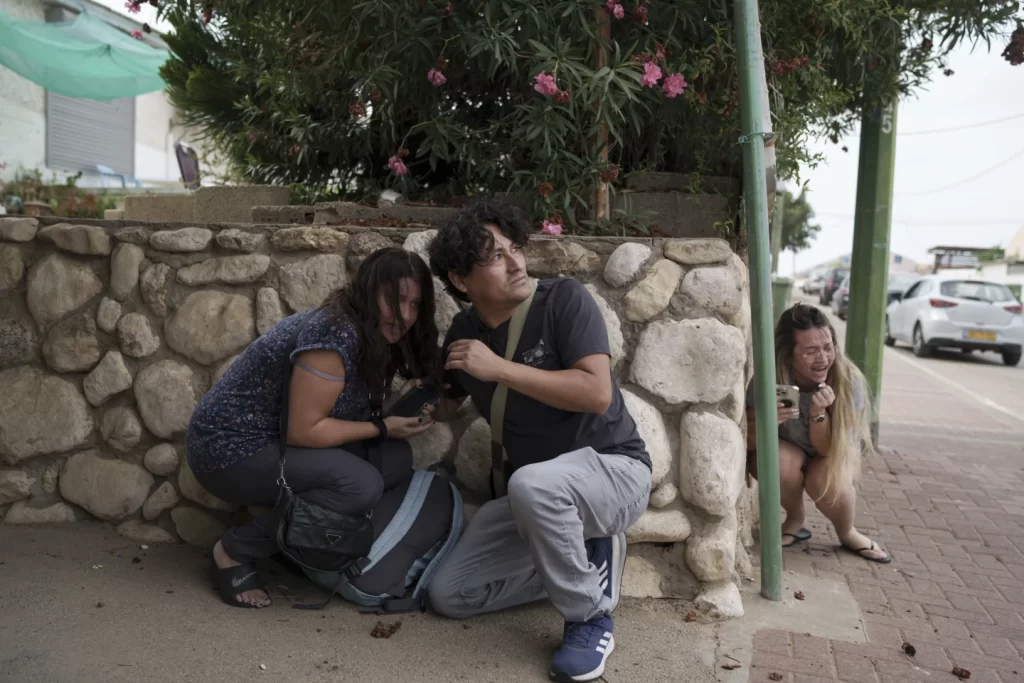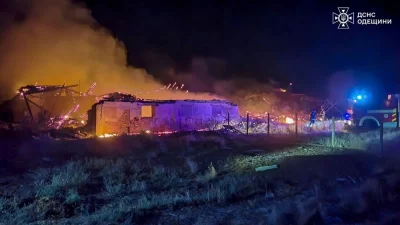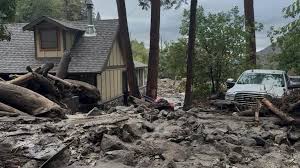
JERUSALEM — When Israel declared war against Hamas last October, it stood unified at home and enjoyed broad backing from around the world following an unprecedented attack by the Islamic militant group.
Six months later, Israel finds itself in a far different place: bogged down in Gaza, divided domestically, isolated internationally and increasingly at odds with its closest ally. The risk of a broader regional war remains real.
Despite Israel’s fierce military onslaught, Hamas is still standing, if significantly weakened. The offensive has pushed Gaza into a humanitarian crisis, displacing more than 80% of the population and leaving over 1 million people on the brink of starvation. Yet Israel hasn’t presented a postwar vision acceptable to its partners, and cease-fire talks remain at a standstill.
Here are six takeaways from the first six months of war.
BATTLEFIELD STALEMATE
Israel declared war in response to Hamas’ Oct. 7 cross-border attack, in which the militant group killed 1,200 people, most of them civilians, and kidnapped about 250 others.
Prime Minister Benjamin Netanyahu set two objectives: destroying Hamas and bringing home the hostages. Despite his repeated pledges to achieve “total victory,” his goals remain elusive.
After steadily conquering most of Gaza in a bruising offensive, Israeli ground troops are in a holding pattern marked by small tactical operations and uncertainty over whether the army will march into the southern Gaza city of Rafah, Hamas’ last significant stronghold.
Netanyahu has repeatedly vowed to invade Rafah, but he faces broad international opposition, including from the United States, because of the hundreds of thousands of displaced Palestinians sheltering there. Netanyahu claims to have a plan to evacuate the civilians, but it isn’t clear whether it is ready or would satisfy the Americans.
Even if Israel does invade Rafah, there is no guarantee of long-term success. Although Hamas appears to have suffered heavy losses, its forces have managed to regroup in areas abandoned by Israel.
At the same time, Israel hasn’t been able to halt the daily attacks it faces on its northern front from the Lebanese militant group Hezbollah. In contrast to Hamas, Hezbollah’s much larger arsenal remains intact, leaving the fate of tens of thousands of uprooted civilians on both sides of the border up in the air. The tensions have threatened to drag in Hezbollah’s sponsor, Iran, especially after an airstrike widely attributed to Israel killed two Iranian generals in neighboring Syria this week.
GROWING ISOLATION
Israel enjoyed broad international support following the Oct. 7 massacre, which was the deadliest attack against Jews since the Holocaust. However, that goodwill has been replaced by impatience and outrage as conditions in Gaza worsen.
More than 33,000 Palestinians have been killed in the war, around two-thirds of them women and children, according to Palestinian health officials whose death toll doesn’t distinguish between civilians and fighters. International aid officials say roughly one-third of Gaza’s population is dealing with catastrophic hunger.
Initial expressions of solidarity from Israel’s allies have given way to calls for a halt to the fighting. Meanwhile, the U.N. world court, looking into genocide allegations against Israel, has ordered Israel to do more to protect Gaza’s civilians.
This isolation appeared to peak on March 25, when the U.N. Security Council, over Israeli objections, passed a resolution demanding an immediate cease-fire. The U.S. infuriated Israel by allowing the resolution to pass.
Things have only worsened for Israel since then, especially following its killing of seven aid workers in what it says was an errant airstrike. Six of the victims were volunteers from countries allied with Israel, antagonizing them and outraging U.S. President Joe Biden. The alleged Israeli airstrike on an Iran’s embassy in Syria and Netanyahu’s efforts to shutter the Arab satellite channel Al Jazeera have further alienated allies.
ISRAEL IS DIVIDED
After a period of broad unity early in the war, Israel has returned to its divided self — with its polarizing leader at the center of the storm. Weekly protests against the government have grown and attract thousands. They are rooted in longstanding grievances against Netanyahu — from his political alliances with far-right and ultra-Orthodox parties to his open-ended corruption trial. However, they have drawn new strength from his failure to bring home the hostages. Roughly half of the hostages were released during a weeklong cease-fire in November. But Israel says 134 remain in captivity.
Israel has already declared more than 30 hostages dead — and there are widespread fears that the true number is higher and will continue to rise the longer they are held.
The plight of the hostages and the anguished cries of their families have resonated deeply with the Israeli public. Some hostage families were among the tens of thousands of people who took to the streets this week calling on the government to resign. It was the largest anti-government demonstration since the war began.





